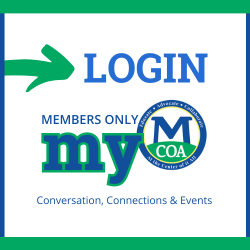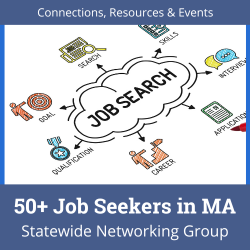Oct 16, 2025 | Age & Dementia Friendly, Public Health
Boston College researchers are conducting a research study aimed at developing and evaluating a 6-week virtual group lifestyle intervention designed to promote social connection and reduce loneliness in older adult informal caregivers who are providing care for a loved one with dementia.
We are looking for caregivers who meet the following criteria:
- Aged 65 or older
- The primary informal (unpaid) caregiver for someone living with dementia
- Live with the person with whom they are providing care
- Fluent in English (to participate in group sessions and complete surveys
- Have access to a computer, tablet or smartphone
- Are comfortable using the internet
All participants who complete the six group sessions & final interview will receive a $50 Amazon gift card.
Interested individuals can complete a short
eligibility screening here. If eligible, you will be asked to complete the consent form and then fill out a short survey.
We would also be very appreciative if COA staff could share the study flyer with its community members
If you have questions, please contact the Principal Investigator, Jane Flanagan (flanagjg@bc.edu), Boston College William F. Connell School of Nursing Associate Professor
Aug 5, 2025 | Healthy Aging, News
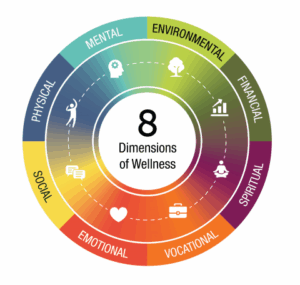 There’s more to being well than eating right and exercising! Wellness wheels showcase several aspects contributing to an individual’s health and fulfilling life.
There’s more to being well than eating right and exercising! Wellness wheels showcase several aspects contributing to an individual’s health and fulfilling life.
National Wellness Month emphasizes the need to slow down and focus on small yet impactful lifestyle changes that lead to long-term wellbeing. Wellness should be an ongoing priority without being overwhelming. While August lasts for only 31 days, the habits and practices developed during National Wellness Month can lead to lifelong improvements.
Ways to Celebrate National Wellness Month
- Prioritize self-care – Engage in activities that you enjoy! They should make you feel refreshed and rejuvenated.
- Improve your diet – Add more whole foods, fruits, and vegetables into your meals to prevent disease and enhance energy levels.
- Increase physical activity – Whether it’s a daily walk, yoga, or a fitness class, staying active is crucial for a healthy body and mind.
- Stay hydrated – Drinking enough fluids daily is essential for digestion, circulation, and other bodily functions.
- Practice mindfulness and stress management – Deep breathing exercises, journaling, and meditation help manage stress and improve mental clarity.
- Get adequate sleep – Prioritizing quality sleep enhances mood, cognitive function, and physical well-being.
- Connect with others – Social interactions and meaningful relationships are vital for emotional health. Spend time with family, friends, or support groups to stay connected.
- Set wellness goals – Establish realistic goals. Track your progress to stay motivated throughout the month.
Setting wellness goals is an effective way to prioritize your physical, mental, and emotional wellbeing. No matter what you want to improve, establishing clear goals can keep you motivated and focused. By taking small, manageable steps toward better health, you can create sustainable routines supporting year-round wellbeing.
10 Ways to Set Wellness Goals
- Define your wellness priorities – Identify areas of wellness to focus on.
- Set SMART goals – Your goals should be Specific, Measurable, Achievable, Relevant and Time-bound to track progress effectively.
- Start small and build gradually – Begin with manageable changes and increase over time.
- Create a wellness plan – Outlining the steps will help you reach your goals. Include deadlines and action items.
- Track your progress – Use journals, apps or trackers to monitor your achievements. Adjust along the way, if needed!
- Stay accountable – Share your goals with someone or join a group and check in regularly.
- Incorporate mindfulness – Meditation, deep breathing or gratitude journaling supports mental and emotional wellness.
- Adapt to challenges – Be flexible and willing to adjust your goals if circumstances change. Be kind to yourself.
- Reward yourself – Celebrate small milestones with rewards that encourage your progress.
- Make wellness a lifestyle – Integrate healthy habits slowly so they become a long-term part of your life. Consistency is key.
Finally, consider a wellness wheel’s shape as well its dimensions. As a circle, there’s no starting point. It’s ongoing. As is in life, it’s never too late to start. Hop on that wheel and roll into wellness. Create your own path with that wheel. Wellness is a journey, not a destination. Cue more wellness puns and clichés . . .
Jul 28, 2025 | Economic Security & Outreach Blog, Healthy Aging, News, Public Health

Many Senior Centers and other public buildings in Massachusetts are designated Cooling Centers. The Mass.gov website has a page devoted to the creation and implementation of Cooling Centers, which offers many good ideas. These ideas seem obvious when encountered in a list of best practices, but it’s easy to overlook some of the simple but important touches like easily read, large-font signage with hours and the posting of rules of use for visitors. This is a great opportunity to think about whether or not your current signage indicating where restrooms are (among other things) is effective for people living with dementia.
Here are some ways to help your guests seeking relief from the heat feel comfortable:
- Be ready to host visitors of all ages and be alert to the needs that can arise when children are in the building.
- Serve chilled water or make sure that guests know where your water fountain or bottle filling station is located.
- Bowls of water for pets are an especially welcoming touch.
- Offer a matinee: a darkened, air-conditioned room can be an extra treat if you’re screening a well-loved classic or other choice.
- Have extra chairs out.
- Encourage the playing of board games and create some game-friendly spaces.
- Print and distribute safety tips and ideas for reducing the risks of extreme heat.
- Advertise your Cooling Center in multiple languages and utilize your local media platforms so that the community is aware of your hours.
- Collaborate with other municipal departments and boards to adequately staff your Cooling Center.
- Be sure that your public safety colleagues are aware of the Cooling Center and know its hours of operation. Maybe one of them could do a presentation on staying safe in extreme heat!
- Deploy volunteers as Cooling Center hosts.
Does your Senior Center offer a Cooling Center? Do you have any tried and true tips to share with the COA community? We’d love to hear them: please post your best practices (or unforeseen challenges) to the InfoHub!
Jun 25, 2025 | Aging Matters Newsletter, Healthy Aging
Cape Cod, especially the Lower Cape region, is home to a significant population of older adults, with nearly 60% of Orleans residents over the age of 60. Within this demographic lies a vibrant, yet sometimes isolated, LGBTQ+ community. Judi Wilson, Director of the Orleans Council on Aging and Senior Center, shares the inspiring journey of how her team proactively created a safe and welcoming space for LGBTQ+ older adults, starting from scratch over a decade ago.
“We had a long-term desire to create a safe space to help people reconnect,” Judi explains, noting that many LGBTQ+ individuals who retired to the area found themselves experiencing a “second coming out” as they navigated new community connections. This observation spurred the Orleans COA to set a broad goal: “creating some kind of LGBTQ+ specific program.”
 The Orleans COA launched its program in 2013, driven by a commitment to addressing isolation and fostering connection. Their recent 10th annual Pride event drew over 200 attendees, a testament to their sustained efforts. Initial programs were intimate, drawing “maybe 25 to 30 people” to monthly Friday evening social events that often included a meal. Judi emphasizes the importance of these early stages: “It was very important to us that we establish a connection with the LGBTQ+ community, that they knew that they were welcome and valued, that the participation was confidential, that this would be a safe space.”
The Orleans COA launched its program in 2013, driven by a commitment to addressing isolation and fostering connection. Their recent 10th annual Pride event drew over 200 attendees, a testament to their sustained efforts. Initial programs were intimate, drawing “maybe 25 to 30 people” to monthly Friday evening social events that often included a meal. Judi emphasizes the importance of these early stages: “It was very important to us that we establish a connection with the LGBTQ+ community, that they knew that they were welcome and valued, that the participation was confidential, that this would be a safe space.”
While their program initially saw significant growth, Judi highlights a positive shift: “Today we don’t get that kind of a turnout… because we want people to be able to connect in community and when that can happen closer to home, I think that’s a good thing.” The success of Orleans has inspired other Cape communities like Chatham, Eastham, Bourne, Yarmouth, and Harwich to launch their own LGBTQ+ inclusive programs, demonstrating a ripple effect of positive change.
The Orleans COA’s programming has evolved over the years, now focusing on larger, seasonal events like Friendsgiving, holiday celebrations, Pride events, and intergenerational programs. They’ve hosted a remarkable array of activities, from Mardi Gras and Halloween parties to legal issue discussions, sexuality programs, film weekends, and even a “Lily Tomlin night.” The consistent element? Food. As Judi quips, “If you feed them, they will come.” She notes that food helps “relax people and makes conversation a little bit more informal.”
A crucial aspect of their success has been the integration of LGBTQ+ individuals into the broader COA community. “People who participate in that program are definitely way more integrated into our other programs,” Judi observes, attributing this to a foundational sense of support, safety, and acceptance. This integration was fostered by a critical first step: “Prior to doing this, we had a full staff mandatory training, more than just an online training. We did an in-person sensitivity training for the staff so that we could get everybody on board with what our goals were.”
 Judi reflects on the unique decision for the COA to directly administer the program, rather than solely supporting a volunteer-led group. While acknowledging potential arguments for either approach, she believes, “Having the COA actually administer the program really helps you integrate the values into your operation in a very different way.” This direct administration, she contends, has facilitated deeper integration of inclusive values throughout all COA offerings. “You have to know your community,” Judi advises, echoing the common wisdom that “if you’ve seen one senior center or COA, you’ve seen one senior center.”
Judi reflects on the unique decision for the COA to directly administer the program, rather than solely supporting a volunteer-led group. While acknowledging potential arguments for either approach, she believes, “Having the COA actually administer the program really helps you integrate the values into your operation in a very different way.” This direct administration, she contends, has facilitated deeper integration of inclusive values throughout all COA offerings. “You have to know your community,” Judi advises, echoing the common wisdom that “if you’ve seen one senior center or COA, you’ve seen one senior center.”
For Judi, this work matters deeply because “isolation is still such a significant problem in the LGBTQ+ population.” She views their LGBTQ+ programming as a “wellness program,” ultimately aimed at helping people “age healthier” through connection and engagement. She’s fortunate to work in a community that empowers the COA to innovate: “Our town has never been anything but supportive.” However, she acknowledges that challenges can arise from societal biases: “There are still people out there who aren’t accepting of the full human rights of people who are part of the LGBTQ+ community. And I think that’s why cultural training and education for the staff was so important.” Ultimately, she stresses, “It had to start at home.”
A Checklist for Councils on Aging Starting LGBTQ+ Inclusive Programs: Judi Wilson’s Top Tips
Judi offers invaluable advice for any COA director looking to embark on similar inclusive programming:
- Connect with the Local LGBTQ+ Community: “One of the first things I would do is try and connect with members of the LGBTQ+ community in your community,” advises Judi. This ensures programming is relevant and desired by those it aims to serve. Don’t “program at them,” but “program with them or for them, alongside them.”
- Start Small and Grow Organically: Not every program needs to be a large-scale event from day one. Begin with manageable initiatives that reflect your community’s capacity and interests.
- Secure Funding Strategically: Identify and pursue diverse funding sources, including grants, as municipal funds may have restrictions on serving non-residents.
- Train Your Staff Thoroughly: Invest in comprehensive, in-person sensitivity training for all staff. This is paramount to ensuring a genuinely welcoming environment. As Judi states, “Train your staff and set expectations and be firm about it. It has to start at home.”
- Foster Internal Buy-In: Ensure your entire team, from staff to volunteers, embraces the initiative. “You’ve got to make sure that your team embraces what you’re doing,” she emphasizes.
- Embrace Learning and Adaptability: Not every program will be an immediate success, and that’s okay. “There’s no failure in our work, not everything is a success, but having tried it, is just as important.” Learn from what works and what doesn’t and adjust your approach accordingly.
- Be Visible and Intentional: It’s important to recognize that a lack of targeted programming might unintentionally convey a message of exclusion. As Judi shared, “If you’ve never done anything, perhaps you have sent a message to the LGBTQ+ community.” Proactive and thoughtful outreach, coupled with clear messaging, is key to demonstrating authentic welcome.
Judi’s overarching message for other COAs and the broader community is clear: “If you have never done anything, you have sent a message to the LGBTQ+ community… that it’s not important to provide that kind of programming. I really think that everybody should be starting to do that.” She encourages starting small, even with a cup of coffee and a conversation with a publicly identified LGBTQ+ community member to understand unmet needs. Allies are abundant, and this work is vital for fostering truly inclusive and supportive environments for all older adults.
Jun 25, 2025 | Aging Matters Newsletter, Healthy Aging
In Massachusetts, a significant grassroots effort is underway to combat loneliness and isolation among LGBTQ+ older adults. OutstandingLife, Inc., a 501(c)(3) non-profit, has emerged as a vital online community, creating connections and fostering well-being across the Commonwealth. David Aronstein, Chairperson of the Board of Directors, shares insights into their impactful work.
“We realized something like this was needed, that it’s an online or virtual community of LGBTQ+ older adults,” David explains, highlighting the organization’s origin at the beginning of the pandemic. In just two years since its portal opened, OutstandingLife has grown to over 500 members. Their approach to age inclusivity is notable: “Our theory is that people think of themselves as old at different points… So, it’s open to anybody.” This inclusive philosophy acknowledges the diverse perspectives on aging within the community.
OutstandingLife offers a rich and varied array of free programs designed to meet the diverse needs of its members.
These include:

- Support Groups: A general support group for LGBTQ+ older adults, a specific group for transgender older adults facilitated by a non-binary Ph.D. psychologist, and groups for griefand caregiving.
- Educational Series: Financial planning sessions and a “Legal Lunch and Learn” series hosted by an elder care lawyer, who titled one session famously “How not to give all your money to a nursing home.”
- Advocacy Hour: Monthly sessions addressing political issues from a non-partisan perspective, featuring guest speakers like Mass Senior Action Council and even Representative Ayanna Pressley, who offered advice on combating feelings of powerlessness.
- Member-Led Programs: A popular monthly “Weather Seminar” led by a meteorologist member, and author readings.
- Wellness Activities: Recently, they’ve launched a bi-weekly chair yoga session.
The virtual nature of OutstandingLife is a deliberate and strategic choice. David points out its benefits: “Even after the isolation of the pandemic, there are lots of folks who have difficulty getting out of the house, who live in areas where there aren’t a lot of services, and they may feel isolated from the LGBTQ+ community themselves.” The free online platform, which resembles a social media site, features calendars, chat functions, member profiles, and even matches individuals with similar interests. “It’s about connecting, learning, and growing as we get older,” David summarizes.
 Discussing the current landscape for LGBTQ+ older adults in Massachusetts, David acknowledges the state’s progressive stance while highlighting broader concerns. “While in Massachusetts, we seem to be a fairly safer place, than rest of the country, the LGBTQ+ community is under attack. Particularly they’ve chosen trans issues because they lost on marriage equality.” He notes that within the community itself, older individuals can sometimes feel marginalized, just as older adults might in other communities.
Discussing the current landscape for LGBTQ+ older adults in Massachusetts, David acknowledges the state’s progressive stance while highlighting broader concerns. “While in Massachusetts, we seem to be a fairly safer place, than rest of the country, the LGBTQ+ community is under attack. Particularly they’ve chosen trans issues because they lost on marriage equality.” He notes that within the community itself, older individuals can sometimes feel marginalized, just as older adults might in other communities.
However, one of the significant barriers faced by LGBTQ+ older adults stems from historical prejudice. Individuals in their sixties, seventies, and eighties grew up in a time before the Stonewall Riots and the gay rights movement, enduring McCarthyism and the “pink scare.” This history often leads to reluctance in joining mainstream organizations. David explains, “Because of the way they grew up, LGBTQ+ older folks are often reluctant to join organizations or groups that aren’t LGBTQ+, because they just don’t know how they’re going to be treated.”
To counteract this, OutstandingLife is engaged in a three-year project with Councils on Aging (COAs) and Aging Service Access Points (ASAPs) across Massachusetts, particularly in gateway cities. The goal is to help these centers develop LGBTQ+ specific programming. A key innovation of this project is that COAs can host their programs on the OutstandingLife platform. This offers their constituents access to a broader community of over 500 members and alleviates the need for COAs to develop their own online infrastructure. Furthermore, OutstandingLife provides stipends to LGBTQ+ individuals within these local communities to work with their COAs, ensuring the programming is truly community-driven: “It’s not the organization deciding, ‘This is what they need.’ It’s ‘This is what we need and want.'”
When advising senior centers on becoming more inclusive and welcoming, David offers several key recommendations:
Resources for Councils on Aging to Foster Inclusivity and Welcome
- Be Visibly Inclusive: Go beyond simply stating you are open. “It’s everything from having signs that say that everybody is welcomed and displaying LGBTQ+ symbols prominently in spaces,” David advises. This visible commitment signals a safe space.
- Develop Targeted Programming: Demonstrate genuine welcome by offering programs specifically for LGBTQ+ staff and individuals in your community. This shows active support beyond just an open-door policy.
- Involve the Community in Program Design: Ensure that LGBTQ+ individuals from your community are actively involved in designing the programs. This ensures relevance and genuine appeal. David stresses that having people help design programs “will be part of why it can be successful.”
- Implement Regular Staff Training: Training on LGBTQ+ issues needs to be an ongoing, institutionalized part of staff orientation and in-service training, not a one-time event. David notes, “Because organizations often experience high staff turnover, this training must be permanently integrated into their practices.”
- Prioritize Persistence Over Numbers: Don’t be discouraged by low initial attendance. Even one person connecting can make a profound difference. David shares a powerful anecdote from his time at the Aids Action Committee: “One person showed up and became an active volunteer. You have to count your successes one by one, not just cumulatively.”
- Integrate Inclusivity: Make LGBTQ+ programming an integral part of your overall offerings, rather than a “secret little thing.” Be transparent and public about your commitment to welcoming all.
- Empower Through Connection: Recognize that joining a group can combat feelings of powerlessness, especially when facing broader societal challenges. This applies whether people are writing letters, attending protests, or simply connecting online.
David’s ultimate hope for the future is rooted in the principle of “bodily autonomy.” He highlights the intersectional nature of identity within the LGBTQ+ community, recognizing that individuals hold multiple identities beyond their sexual orientation or gender identity including race and ethnicity, among others. OutstandingLife strives to create a welcoming online home for everyone, regardless of their intersecting identities.
For LGBTQ+ individuals, there’s often a constant, “subliminal vigilance” in the background: “Am I going to be attacked one way or another for being my authentic self?” This question, David explains, is a daily reality for many, making safe, free spaces like OutstandingLife and welcoming Councils on Aging invaluable.
To learn more about OutstandingLife and support their mission, visit their website at www.outstandinglife.org. To explore how your COA can partner with OutstandongLife, please contact Jenn Knight, Director of Marketing and Outreach at jennk@outstandinglife.org
Jun 25, 2025 | Aging Matters Newsletter, Healthy Aging
The Bourne Council on Aging (COA), led by Director Debora Oliviere, serves residents aged 60 and above, a threshold tied to critical grant funding that supports many of their vital programs. Since assuming the director role in 2020, just weeks before the COVID-19 pandemic, Debbie has navigated significant changes, including a major flood and a shift in the population they serve.
“In 2024, we finally were getting back to who we were,” Debbie reflects, describing the post-pandemic evolution. She notes a significant shift from “the greatest generation” to a “heavy Boomer generation” utilizing their services, which has necessitated new marketing approaches and program offerings. The COA now provides popular therapeutic offerings like Reiki, drum circles, and chair yoga with sound meditation. Their chair yoga class alone draws around 50 participants twice a week, a testament to the community’s engagement.
Beyond popular classes, the COA offers a wide array of services including a working cafe, a respite program for caregivers, wellness clinics, fitness programs, and an extensive outreach department. This department, as Debbie describes, acts as the “eyes and ears to the community,” assisting with everything from SNAP applications and housing concerns to navigating complex benefits.
 A key focus for the Bourne COA has been fostering inclusivity, particularly for the LGBTQ+ community. “When I first started here, we didn’t have really any LGBTQ+ type of programming. In 2022, we made it a focus,” Debbie states. Their approach began with community roundtables, seeking direct feedback on what services and programs were desired. Debbie understood the specific needs of this community, noting, “This was a generation where individuals weren’t permitted to marry or openly raise children, leading many to age in isolation after their partners passed away. This history often meant they had specific needs and might not have felt welcome in municipal settings.” This understanding drove their commitment to change.
A key focus for the Bourne COA has been fostering inclusivity, particularly for the LGBTQ+ community. “When I first started here, we didn’t have really any LGBTQ+ type of programming. In 2022, we made it a focus,” Debbie states. Their approach began with community roundtables, seeking direct feedback on what services and programs were desired. Debbie understood the specific needs of this community, noting, “This was a generation where individuals weren’t permitted to marry or openly raise children, leading many to age in isolation after their partners passed away. This history often meant they had specific needs and might not have felt welcome in municipal settings.” This understanding drove their commitment to change.
They started with a movie night, partnering with a neighboring town, Sandwich, to screen “Gen Silent,” a film about LGBTQ+ aging. Building on this, they’ve gradually developed a core group of 10-13 regular attendees for quarterly events, including their annual Pride luncheon.
Their initial efforts, like placing rainbow stickers on office doors and in the cafe, met with some resistance. “After a couple of months, we had some pushback, and it was really upsetting, very distressing,” Debbie recounts. One individual aggressively removed stickers and challenged staff. Debbie’s response was resolute: “For us, that sticker simply means, ‘Everyone is welcome here, no exceptions.’ It’s a universal message of inclusivity.” Despite the challenges, the COA persisted.
Debbie often shares a powerful personal anecdote to explain the vital importance of this work to those who question it. She recalls a time when a caregiver for an individual in their day program identified his partner as his “brother.” Debbie was unaware of their true relationship until the bus driver casually referred to him as his “partner.” Debbie reflects, “I felt awful that they didn’t feel comfortable enough to clue me in on that.” The profound impact came later: when the partner passed away, the surviving individual had to “go back in the closet” upon entering assisted living. Debbie emphatically states, “And that’s why we do this work.” She adds, “It’s the right human thing to do. This is a community that was marginalized for years and continues to be. And that’s why it’s important.”
While there have been political challenges and a climate of fear impacting many seeking assistance, Debbie notes that attendance at their inclusive programs has remained steady, with a core group appreciating the community and support.
Here are key takeaways for other Councils on Aging from Bourne’s experience:
Tips for Councils on Aging to Foster Inclusivity and Welcome
- Seek Community Feedback Actively: Don’t assume you know what a specific community needs. Start by engaging them in discussions to understand their desires and challenges.As Debbie advises, “You need community feedback, because every community is a little different.”
- Partner with Local Stakeholders: Identify individuals and organizations within the community who can help you understand, promote, and sustain inclusive programming. Debbie stresses, “You need stakeholders. You need people that are going to help you move this forward.”
- Be Visible and Unapologetic in Your Welcome: Displaying inclusive symbols like rainbow stickers clearly communicates your stance. Be prepar
 ed forpotential pushback, and have a clear, principled response ready. Debbie’s firm stance was: “We made it clear that we would not be swayed by discriminatory views, as the Council on Aging is fully within its rights and mission to provide these programs.”
ed forpotential pushback, and have a clear, principled response ready. Debbie’s firm stance was: “We made it clear that we would not be swayed by discriminatory views, as the Council on Aging is fully within its rights and mission to provide these programs.”
- Start Slowly and Be Persistent: Building trust and engagement takes time. Begin with a few well-chosen programs and consistently offer them. Debbie describes their process: “We started off with a movie and got some more feedback from folks.”
- Leverage Personal Stories to Educate: Powerful personal narratives can effectively communicate the importance of inclusive work to those who don’t understandor are resistant. Debbie’s story of the couple who felt unable to be open truly transformed a critic: “I have no response. I have no rebuttal to that.”
- Network with Other COAs and Groups: Share resources, ideas, and even attendees with other Councils on Aging and community groupsalreadydoing this work. Debbie mentions, “We actively collaborate with the Yarmouth group, sending them our program information and receiving theirs in return.”
- Champion the Fundamental Human Right to Belong: Frame inclusivity not just as a program, but as a core value. As Debbie profoundly states, “We all deserve to age in place successfully. Everyone should feel welcome, and no one should be excluded as we go through the aging process.”
Bourne’s journey illustrates that while establishing an inclusive environment may face obstacles, the dedication to creating a safe and welcoming space for all members of the community is a deeply impactful and ultimately successful endeavor.
Jun 25, 2025 | Aging Matters Newsletter, Healthy Aging
Arlington, Massachusetts, stands out as a community deeply committed to supporting its older residents, with nearly 30% of its population over age 60. At the heart of this commitment is the Arlington Council on Aging (COA), led by Executive Director Kristine Shah, and supported by a dedicated team including Social Worker Marci Shapiro Ide, LICSW. Since reopening its renovated center in 2022, the COA has seen a dramatic increase in engagement, more than doubling the number of people it serves.
“Our days are very unpredictable sometimes here, you never know what’s going happen,” Kristine shares, describing the dynamic nature of their work. From facilitating yoga classes to addressing housing crises, the Arlington COA team navigates a broad spectrum of needs, always striving to help as many people as possible.
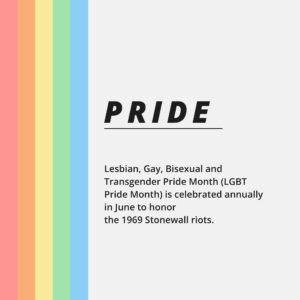 Marci Shapiro Ide, LICSW, a social worker at the Arlington COA, brings a unique background to her role. After years in philanthropy and even the state prison system, Marci sought a more direct connection with people. Her journey into supporting older adults, particularly within the LGBTQ+ community, was serendipitous. Recalling her initial foray into LGBTQ+ programming, Marci describes attending the LGBTQ+ aging conference: “It was the most amazing conference. I actually went 2 years in a row… how would you not love a conference where a drag queen greets you at the door?” This experience sparked a determination to bring similar inclusivity to Arlington.
Marci Shapiro Ide, LICSW, a social worker at the Arlington COA, brings a unique background to her role. After years in philanthropy and even the state prison system, Marci sought a more direct connection with people. Her journey into supporting older adults, particularly within the LGBTQ+ community, was serendipitous. Recalling her initial foray into LGBTQ+ programming, Marci describes attending the LGBTQ+ aging conference: “It was the most amazing conference. I actually went 2 years in a row… how would you not love a conference where a drag queen greets you at the door?” This experience sparked a determination to bring similar inclusivity to Arlington.
A pivotal step was undertaking the “Open Door” training in 2013, offered by the LGBTQ+ Aging Project, which educated all COA staff, local clergy, and other non-profit professionals. A core outcome of this training was the development of a comprehensive welcome statement. This statement, which is still prominently featured in their newsletter and throughout the center, Kristine notes, “really speaks to how we value everybody in the community.” It serves as a visible and enduring symbol of the COA’s commitment, going beyond simple gestures like a rainbow sticker.

Initial LGBTQ+ specific programming, such as movie nights, took time to gain traction. “A lot of it didn’t work, or I would say attendance was very low,” Marci admits. However, persistent efforts, like partnering with the library for an off-site movie series and hosting the intergenerational “Sage Table” meals, gradually built a stronger sense of community. Marci also recalls that identifying the LGBTQ+ community as an underserved population around 2012 by the National Council on Aging (NCOA) was crucial. She explains, “obviously, it’s not a great thing to be identified as underserved, but it provides more guidance and weight when you’re developing programs.” This recognition enabled the COA to secure funding and further legitimize their inclusive initiatives. The virtual shift during the COVID-19 pandemic, surprisingly, led to a “huge spike” in participation for their LGBTQ+ online groups, with up to 20 people attending weekly. This underscored the profound need for connection.
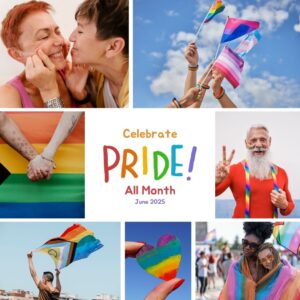 Over the past decade, Arlington has seen a notable shift in attitudes. Kristine observes that non-LGBTQ+ individuals are becoming more comfortable attending programs that haveLGBTQ+ themes, like a movie about Abraham Lincoln’s relationships. “I think people were afraid to come to that type of a movie 12 years ago, it was a, ‘I don’t want to be in that room with people who might think that I’m watching it because I’m gay.'” This growing comfort has fostered a more integrated environment where affinity groups remain valuable but individuals also feel secure joining any class or activity.
Over the past decade, Arlington has seen a notable shift in attitudes. Kristine observes that non-LGBTQ+ individuals are becoming more comfortable attending programs that haveLGBTQ+ themes, like a movie about Abraham Lincoln’s relationships. “I think people were afraid to come to that type of a movie 12 years ago, it was a, ‘I don’t want to be in that room with people who might think that I’m watching it because I’m gay.'” This growing comfort has fostered a more integrated environment where affinity groups remain valuable but individuals also feel secure joining any class or activity.
Marci highlights that despite Arlington’s generally inclusive nature, some barriers for LGBTQ+ individuals persist, often stemming from historical societal pressures. Many older LGBTQ+ adults may have aged without a legal spouse or children, leading to limited support networks for critical needs like caregiving or designating a healthcare proxy. “There’s a lot of LGBT older adults who have been unmarried or single, and don’t have the support of a partner as they age and all of their friends are similar ages also dealing with age related health issues.” She further elaborates on the challenges when trying to identify support systems for these individuals: “ Financially, I’ve seen that it varies and there are many people for whom finances are not an issue. Many LBGTQ+ individuals can pay for the care they need as long as they know where to get it.” This emphasizes the crucial role COAs play in providing connection and resources.
When asked how other centers can replicate Arlington’s success, Marci points to ongoing collaboration and shared learning. She recommends the monthly programming meetings hosted by the LGBTQ+ Aging Project, a resource advertised by the Massachusetts Councils on Aging (MCOA). She also champions the concept of an inclusive welcome statement and a gradual, consistent approach to integrating LGBTQ+ affirming activities. Marci adds a practical tip based on her experience: “I started partnering with the library. And we did a movie series. And that was one of my most popular programs.” This strategy of leveraging existing community resources for outreach proved highly effective.
Here are key takeaways for other Councils on Aging:
Top Strategies for Councils on Aging to Foster Inclusivity and Welcome
- Develop and Prominently Display a Welcome Statement: Craft a statement that clearly articulates your COA’s commitment to valuing every community member, regardless of identity. Post it in your facility and include it regularly in your communications. Kristine shares that this statement “really speaks to how we value everybody in the community.”
- Utilize Training and Educational Resources: Engage with programs like the “Open Door” training from the LGBTQ+ Aging Project. Educating staff and the broader community is fundamental.
- Start Slowly and Build Momentum: Begin with one or two targeted programs and assess what resonates. Initial attendance may be low, but consistency and thoughtful outreach will build trust and participation over time. Kristine noted, “It just took time to build it.”
- Partner with Community Organizations: Collaborating with local libraries, LGBTQ+ organizations, or even high school GSAs (Gay-Straight Alliances) can expand your reach and offer diverse programming. Marci highlights that her collaboration with the library for movie series “was one of my most popular programs.”
- Leverage Recognition of Underserved Populations: If a community is identified as underserved, like the LGBTQ+ community was by NCOA, use that recognition to advocate for and secure funding for specific programming. Marci explains, “It gives a lot of weight when you’re developing programs.”
- Integrate, Don’t Segregate: While affinity groups have value, strive to integrate LGBTQ+ content and inclusivity into mainstream programming. This normalizes acceptance and broadens participation. Kristine observes, “We’re seeing people feel much more included, saying things like, ‘I can come to this movie,’ and ‘I can go to the yoga class,’ without the need for a separate LGBTQ+ mindfulness class as long as there still time and space for affinity groups.“
- Embrace and Highlight Inclusivity in All Communications: Clearly state that events are open to “LGBTQ+ individuals and friends” to signal a welcoming environment for allies and family members. Kristine explains this approach: “Once people realized that LGBTQ+ seniors and their friends are hosting a party everybody’s welcome to come.”
Arlington’s journey exemplifies how dedication, strategic programming, and a genuine commitment to welcoming all members can transform a Council on Aging into a vibrant, inclusive hub, fostering essential connections and combating isolation for everyone in the community.
Jun 25, 2025 | Aging Matters Newsletter, Healthy Aging
Lisa Krinsky, Director of the LGBTQIA+ Aging Project at Fenway Health, has dedicated 21 years to fostering inclusive environments for LGBTQ+ older adults in Massachusetts. Her journey began in the ASAP network where she quickly identified a critical gap: the lack of support and visibility for LGBTQ+ individuals as they age. This realization propelled her into a pioneering role, working at the intersection of aging services and the LGBTQ+ community.
 Krinsky’s early work highlighted a significant challenge: simply updating forms to include questions about sexual orientation or gender identity wasn’t enough. As she explains, “You can’t just change the forms. You have to train people. You have to help support them, be successful in doing their jobs.” This understanding led to a focus on comprehensive training and technical assistance for Aging Services Access Points (ASAPs) and Councils on Aging (COAs). The goal was to help organizations “get your house in order” by examining everything from employee and consumer policies to marketing and outreach.
Krinsky’s early work highlighted a significant challenge: simply updating forms to include questions about sexual orientation or gender identity wasn’t enough. As she explains, “You can’t just change the forms. You have to train people. You have to help support them, be successful in doing their jobs.” This understanding led to a focus on comprehensive training and technical assistance for Aging Services Access Points (ASAPs) and Councils on Aging (COAs). The goal was to help organizations “get your house in order” by examining everything from employee and consumer policies to marketing and outreach.
One key to success has been collaborative efforts. Krinsky recalls instances where the Aging Project would partner with COAs, leveraging their own standing in the community to build trust. “We would leverage our position in the community to help build relationships and have people come through the door and feel safe,” she says. This approach allowed LGBTQ+ individuals to feel secure enough to engage, eventually no longer needing the Aging Project’s direct involvement.
Despite progress, barriers persist. Krinsky notes that some COAs initially believed they had no LGBTQ+ members, asking, “Why should we do a program?” She emphasizes that a proactive approach is crucial: “If you wait for people to show up on your door, it’s very different than being proactive.”
A significant stride in overcoming these barriers came in 2018 with first-in-the-nation legislation requiring LGBTQ+ training for all entities contracting with Massachusetts’ state unit on aging. This ensures a baseline understanding of inclusive practices across the network. More recently, in the past year, legislation passed establishing an LGBTQI+ Bill of Rights in long-term care, codifying protections and respectful treatment for this population.
While these legislative changes are vital, Krinsky stresses that true inclusivity requires ongoing effort and a shift in mindset. She offers five key recommendations for COAs looking to become more welcoming and affirming:
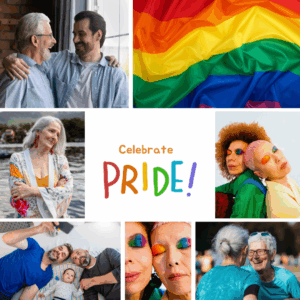 Ways Councils on Aging Can Foster LGBTQ+ Inclusion
Ways Councils on Aging Can Foster LGBTQ+ Inclusion
- Commit Resources and Build Foundation: Don’t just jump into programming. Dedicate staff time, financial resources, and physical space to cultivate an inclusive environment. “Putting that infrastructure time in and commitment is what will help you be successful,” Krinsky advises.
- Integrate Messaging into Regular Communications: Make it clear to everyone that your COA is welcoming. During Pride Month, or anytime during the year, include a statement in your newsletter celebrating LGBTQIA+ individuals and emphasizing the COA’s commitment to inclusivity. This not only invites LGBTQ+ folks but also informs non-LGBTQ+ members about the COA’s values, setting a tone that discourages discriminatory behavior. “It’s about letting everyone know, LGBTQ+ and non-LGBTQ+ members alike, that this center operates on principles of respect and belonging for all.”
- Increase Visibility: Simple visible gestures can make a big difference. Display a rainbow flag or sticker in your senior center, or encourage staff to wear rainbow pins on their ID badges. These small signs send a powerful message of welcome.
- Weave LGBTQ+ Content into Existing Programming: Don’t relegate LGBTQ+ topics just to Pride month. If you have a movie series, show a film like “Milk” during June or October (LGBTQ+ History Month). For book clubs, include books by LGBTQ+ authors or those exploring LGBTQ+ themes throughout the year. “It’s not just, ‘Oh, we do this in June,'” Krinsky emphasizes. “I really hope that they’re not just segregated to that one time in the calendar and that you’re able to incorporate that into your overall programming.”
- Be Prepared for Resistance: Understand that not everyone may immediately embrace these changes. Some individuals might express discomfort or even hostility. Being prepared for such reactions and having a clear stance against discriminatory behavior is essential.
The journey toward full inclusion is ongoing, and as Krinsky’s work demonstrates, it requires dedication, strategic planning, and a willingness to proactively create spaces where all individuals as they age feel safe, seen, and celebrated.
What steps is your Council on Aging taking to be more welcoming and inclusive to all members of your community?
If you are interested in learning about how your COA can be more LGBTQ+ inclusive reach out to Lisa Krinsky at lkrinsky@fenwayhealth.org
May 27, 2025 | Aging Matters Newsletter, Mental Health
At our local Councils on Aging (COAs) and Senior Centers, you’ll find dedicated individuals who are often the first point of contact for older adults navigating life’s complexities. These compassionate professionals are more than just guides to resources; they are listeners, problem-solvers, and often, a steady presence in times of distress. The Massachusetts Councils on Aging (MCOA) recognizes this vital role, and their “Behavioral Health Training” series, in partnership with McLean Hospital, is designed to empower COA staff with the specialized tools they need.
We recently spoke with Amanda Kirk, a Licensed Social Worker at the Beverly Council on Aging, who enthusiastically attended the training series. With five years under her belt at the COA and a background in social work, Amanda came into the training with a solid foundation. Yet, she found immense value in MCOA’s commitment to ongoing learning. “I love ongoing training,” Amanda shares, “I think it’s really important to keep learning and to take your experience and mesh it with new training, understanding new research.”
What truly drew Amanda to this series was the caliber of the instructors. “An opportunity with McLean, with doctors and a social worker from McLean, you can’t turn that down. It’s incredible to have this renowned hospital and program available for COA staff to learn from these professionals in the mental health field.”
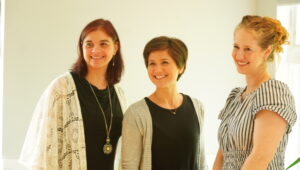 Unpacking the “Iceberg” and Embracing “BIG”
Unpacking the “Iceberg” and Embracing “BIG”
For Amanda, the most impactful takeaway wasn’t just about new clinical content, but a deeper understanding of the human element in every interaction. She highlighted the powerful analogy of the “iceberg,” emphasizing that while older adults present with certain immediate concerns, there’s often a rich history and a multitude of unspoken factors beneath the surface.
“I loved when the trainer said that as a social worker, as whoever we are as providers, we offer the same thing; education, and who you are at the moment. You need to be aware of other factors in our own lives when working with someone. This profound reminder fosters empathy and encourages staff to look beyond the immediate presentation of a situation.
A cornerstone of the training that Amanda immediately put into practice was the “BIG” acronym: Boundaries, Integrity, and Generosity. She even has a sticky note on her computer as a constant reminder. “I really appreciated that, because thinking about who you are as a person in the moment, what you bring, really does affect that outcome. “This framework helps COA staff navigate complex situations with both compassion and professional clarity.
Navigating Crises and Long-Term Needs
COA staff are often the first to hear about a wide range of needs, from immediate crises to persistent behavioral health challenges. Amanda noted that while crises naturally grab attention, the training underscored the importance of addressing long-term mental health needs that individuals may have carried for years. “People with longer-term mental health challenges also should be getting that kind of attention and intervention.”
The training augmented Amanda’s existing de-escalation skills by reinforcing the power of a “warm handoff” during referrals. Instead of just providing a phone number, the emphasis was on connecting clients directly with a named contact, ensuring a smoother transition and fostering a sense of respect and follow-through.
The Unspoken Power of Self-Care and Shared Understanding
The self-care component of the training also proved incredibly impactful for Amanda. In a profession known for its potential for burnout, the validation offered was invaluable. “If you are feeling stressed, or if you are feeling worn out, or if you’re feeling sad because of a loss, etc., that’s all very normal. You’re not supposed to go through a career or a helping profession unaffected.” This normalization encourages COA staff to prioritize their own well-being, recognizing it as essential to their ability to help others.
Perhaps one of the most heartwarming aspects of nse of community it fosters. “It was very validating. It was very normalizing. ‘Oh, you experienced that at your COA as well.’ It was really helpful to hear other towns that struggled with it.” This shared understanding creates a supportive network among COA professionals across the state, reminding them they are not alone in the vital work they do.
MCOA’s “Behavioral Health Training” series is clearly more than just a series of workshops. It’s a testament to MCOA’s commitment to empowering COA staff, equipping them with essential knowledge, fostering self-awareness, and building a stronger, more connected network of care for older adults across Massachusetts.
May 27, 2025 | Aging Matters Newsletter, Mental Health
For Emily Kuhl, a seasoned case manager at The Newton Cooper Center (Newton Older Adult Services), the recent “Behavioral Health Training” series offered by McLean Hospital and the Massachusetts Councils on Aging (MCOA) wasn’t just another professional development opportunity; it was a profound affirmation and enhancement of her 18 years in the aging field. Having attended all sessions, Emily’s insights highlight the invaluable impact this training has on COA staff, regardless of their background.
Emily, a licensed mental health counselor, has always sought ways to improve her practice. “I’m always looking for trainings that just help me improve upon what I do, and I know McLean provides professional training, so I almost always am going to sign up for one of those.” But what truly resonated with her about this series was its specific focus on mental health for older adult services, a topic she feels is often overlooked despite the growing complexity of needs within COAs. “What caught my eye about it was that it was designed with information about mental health to older adult services. Primarily, COAs, which I found doesn’t often happen.”
Essential Value for All Staff
Emily firmly believes this training is essential for all COA staff, not just those with a social work or mental health background. She witnessed firsthand how colleagues, eager to help, sometimes found themselves ill-equipped to handle high-stress situations. The training, she explains, offers practical skills that can empower anyone working on the front lines.
“I think the training is for anybody and not specifically for staff with a background in mental health,” Emily states. “We’ve had moments here where I’ve seen some of my colleagues get a little panicked about a situation, this education would be really helpful. I think it’s a great tool for us all to have; you don’t always know who’s going to walk in the door.” From the reception desk to the director’s office, unexpected mental and behavioral health challenges can arise at any moment, and having a foundational understanding of how to respond is critical.
Key Takeaways and Transformative Insights
One of the most impactful lessons for Emily came from the BIG acronym: Boundaries, Integrity, and Generosity. She explains how it helps staff prioritize: “you start with the generosity of ‘I want to help this person, they’re really in need’ to integrity, which is what is my role within the field, and then boundaries of knowing what I can do, what I can’t do.” This framework proved particularly helpful in navigating challenging client situations, allowing her to re-evaluate her approach and set necessary limits while still providing support.
The training also reinforced the importance of active listening and grounding oneself in crisis situations. Emily noted, “when someone’s in crisis, they often think they’re not being heard, or they’re not being listened to. You need to go into the situation, intending to portray that you are listening, that you do care, and that you want to help.” She emphasized that a calm and grounded demeanor can help de-escalate a heightened individual, preventing a situation from spiraling out of control.
Another significant benefit was the sense of camaraderie and shared experience among COA professionals. “It reminds you you’re not in a bubble, mental health isn’t just in Newton? It’s everywhere. So that that feeling of camaraderie… I’m not actually alone. I have colleagues across the state who are running into these issues as well.'” This validation and shared understanding foster a supportive network that extends beyond individual towns.
Finally, the focus on self-care as a vital component of effective service deeply resonated with Emily. Recognizing the emotional toll of working with vulnerable populations, the training underscored the necessity of prioritizing one’s own well-being. Emily now consciously checks in with herself throughout the day: “I’m finding that I’m paying more attention to myself and how I’m doing, and that, I think, is helping me help others. It’s the whole airplane metaphor of putting the oxygen mask on yourself first.”
The “Behavioral Health Training” series is clearly making a tangible difference in the daily work of COA staff like Emily. By equipping them with practical skills, fostering a sense of community, and emphasizing self-care, the program empowers these frontline professionals to provide even more effective and compassionate support to older adults.
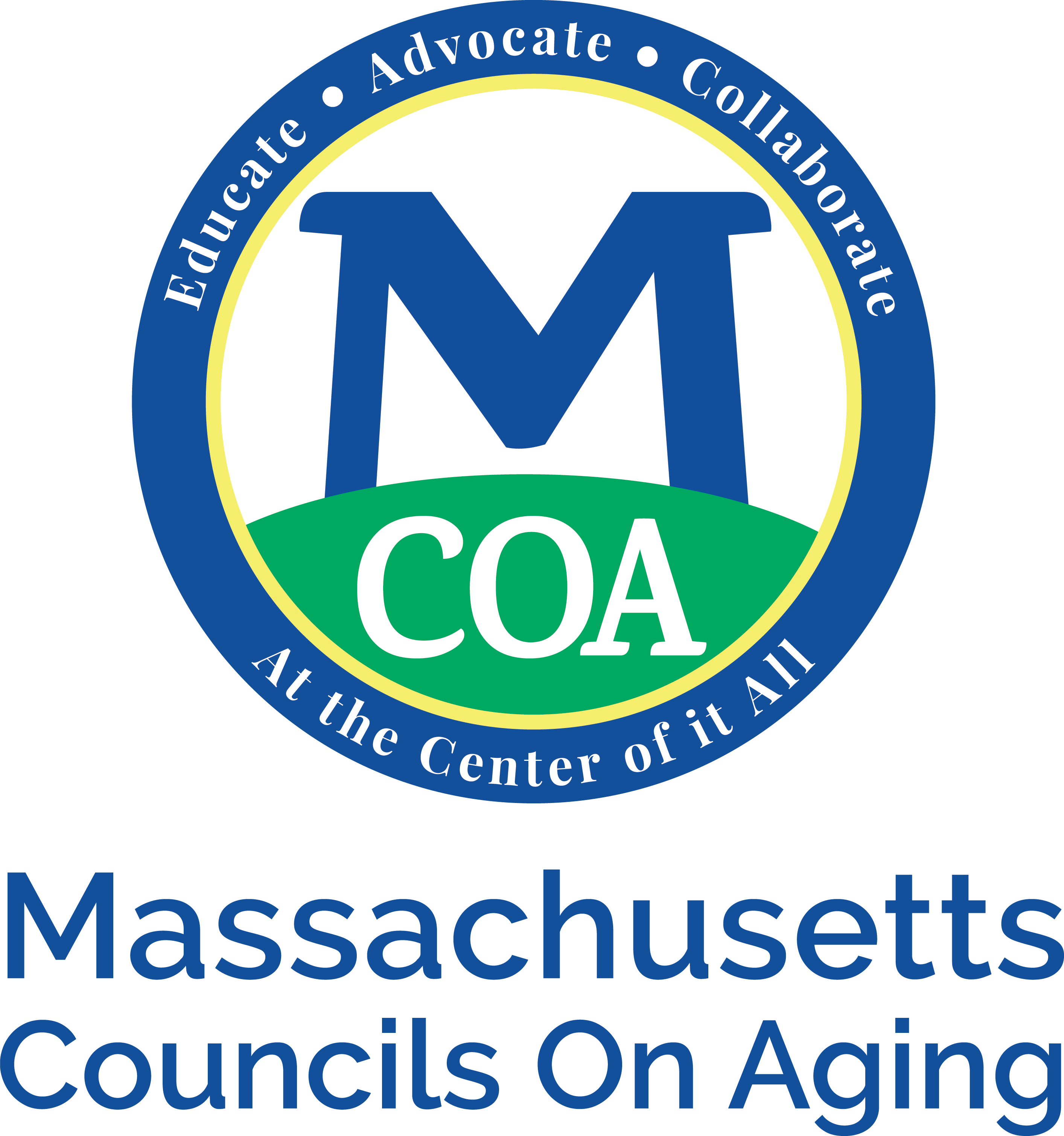
 There’s more to being well than eating right and exercising! Wellness wheels showcase several aspects contributing to an individual’s health and fulfilling life.
There’s more to being well than eating right and exercising! Wellness wheels showcase several aspects contributing to an individual’s health and fulfilling life.
 The Orleans COA launched its program in 2013, driven by a commitment to addressing isolation and fostering connection. Their recent 10th annual Pride event drew over 200 attendees, a testament to their sustained efforts. Initial programs were intimate, drawing “maybe 25 to 30 people” to monthly Friday evening social events that often included a meal. Judi emphasizes the importance of these early stages: “It was very important to us that we establish a connection with the LGBTQ+ community, that they knew that they were welcome and valued, that the participation was confidential, that this would be a safe space.”
The Orleans COA launched its program in 2013, driven by a commitment to addressing isolation and fostering connection. Their recent 10th annual Pride event drew over 200 attendees, a testament to their sustained efforts. Initial programs were intimate, drawing “maybe 25 to 30 people” to monthly Friday evening social events that often included a meal. Judi emphasizes the importance of these early stages: “It was very important to us that we establish a connection with the LGBTQ+ community, that they knew that they were welcome and valued, that the participation was confidential, that this would be a safe space.” Judi reflects on the unique decision for the COA to directly administer the program, rather than solely supporting a volunteer-led group. While acknowledging potential arguments for either approach, she believes, “Having the COA actually administer the program really helps you integrate the values into your operation in a very different way.” This direct administration, she contends, has facilitated deeper integration of inclusive values throughout all COA offerings. “You have to know your community,” Judi advises, echoing the common wisdom that “if you’ve seen one senior center or COA, you’ve seen one senior center.”
Judi reflects on the unique decision for the COA to directly administer the program, rather than solely supporting a volunteer-led group. While acknowledging potential arguments for either approach, she believes, “Having the COA actually administer the program really helps you integrate the values into your operation in a very different way.” This direct administration, she contends, has facilitated deeper integration of inclusive values throughout all COA offerings. “You have to know your community,” Judi advises, echoing the common wisdom that “if you’ve seen one senior center or COA, you’ve seen one senior center.”
 Discussing the current landscape for LGBTQ+ older adults in Massachusetts, David acknowledges the state’s progressive stance while highlighting broader concerns. “While in Massachusetts, we seem to be a fairly safer place, than rest of the country, the LGBTQ+ community is under attack. Particularly they’ve chosen trans issues because they lost on marriage equality.” He notes that within the community itself, older individuals can sometimes feel marginalized, just as older adults might in other communities.
Discussing the current landscape for LGBTQ+ older adults in Massachusetts, David acknowledges the state’s progressive stance while highlighting broader concerns. “While in Massachusetts, we seem to be a fairly safer place, than rest of the country, the LGBTQ+ community is under attack. Particularly they’ve chosen trans issues because they lost on marriage equality.” He notes that within the community itself, older individuals can sometimes feel marginalized, just as older adults might in other communities. A key focus for the Bourne COA has been fostering inclusivity, particularly for the LGBTQ+ community. “When I first started here, we didn’t have really any LGBTQ+ type of programming. In 2022, we made it a focus,” Debbie states. Their approach began with community roundtables, seeking direct feedback on what services and programs were desired. Debbie understood the specific needs of this community, noting,
A key focus for the Bourne COA has been fostering inclusivity, particularly for the LGBTQ+ community. “When I first started here, we didn’t have really any LGBTQ+ type of programming. In 2022, we made it a focus,” Debbie states. Their approach began with community roundtables, seeking direct feedback on what services and programs were desired. Debbie understood the specific needs of this community, noting,  ed forpotential pushback, and have a clear, principled response ready. Debbie’s firm stance was:
ed forpotential pushback, and have a clear, principled response ready. Debbie’s firm stance was: 


 Krinsky’s early work highlighted a significant challenge: simply updating forms to include questions about sexual orientation or gender identity wasn’t enough. As she explains, “You can’t just change the forms. You have to train people. You have to help support them, be successful in doing their jobs.” This understanding led to a focus on comprehensive training and technical assistance for Aging Services Access Points (ASAPs) and Councils on Aging (COAs). The goal was to help organizations “get your house in order” by examining everything from employee and consumer policies to marketing and outreach.
Krinsky’s early work highlighted a significant challenge: simply updating forms to include questions about sexual orientation or gender identity wasn’t enough. As she explains, “You can’t just change the forms. You have to train people. You have to help support them, be successful in doing their jobs.” This understanding led to a focus on comprehensive training and technical assistance for Aging Services Access Points (ASAPs) and Councils on Aging (COAs). The goal was to help organizations “get your house in order” by examining everything from employee and consumer policies to marketing and outreach. Ways Councils on Aging Can Foster LGBTQ+ Inclusion
Ways Councils on Aging Can Foster LGBTQ+ Inclusion
